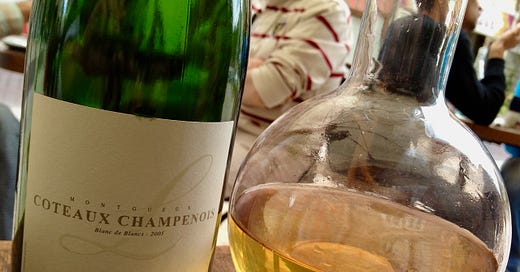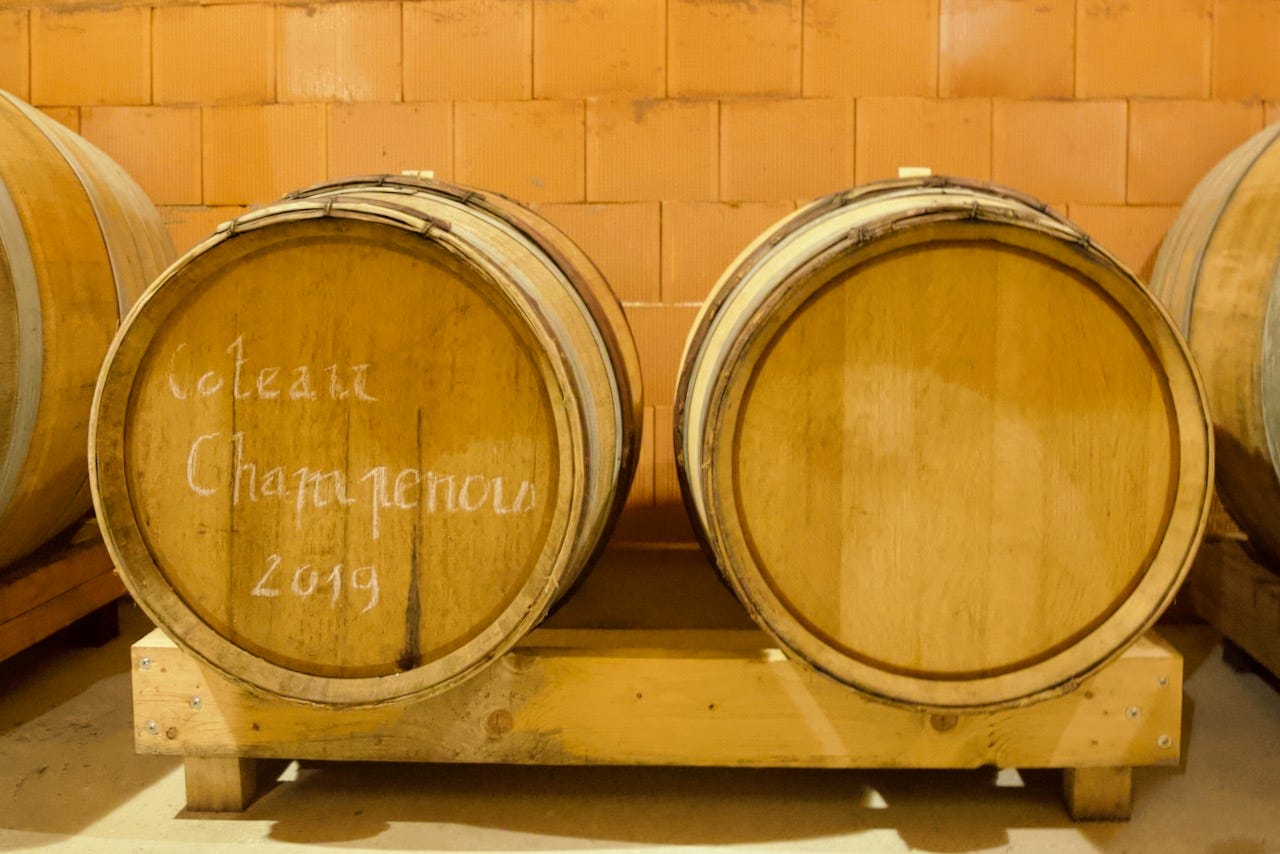On Côteaux Champenois
Four key reasons why still wines from Champagne tend to suck. And some notable exceptions from Manu Lassaigne and Champagne Ruppert-Leroy.
Champagne lore is rife with accounts of the fame of the region’s still wines, before sparkling wine became the dominant style in 18th century. By no coincidence, for wine geeks, a brief fascination with Rosé des Riceys and other Côteaux Champenois is almost a rite of passage. If the masses want sweet Veuve Cliquot, goes the wine geek’s reasoning, then I shall proclaim to all who will listen my love for viciously acidic still wines from Champagne.
No bubbles, no fruit, no joy, just nothing: like a John Cage performance of wine appreciation.
For me, this was a quick phase, almost ten years ago. If Côteaux Champenois has been on my mind again, it’s because I recently received the gift of an overpackaged bottle of 2018 Côteaux Champenois rouge from a well-respected estate in Ludes. The wine was 12.5% alcohol. Yet it was fundamentally heavier and sweeter than a 14% 2019 Barbera by Jean-Yves Péron that we opened just before it. I suspect the Côteaux Champenois had been chaptalized to reach 12.5% - in 2018, a warm vintage.
Thinking it over, I identified four issues that I suspect undergird the general fruitless disappointment of most Côteaux Champenois.
HARVEST LOGISTICS
The first is practical, and concerns the scheduling of harvest labor. Still wines from Champagne suck for the same reason chardonnay from the Beaujolais tends to suck: when it comes to harvest logistics, an estate’s priorities are elsewhere.
Harvest of a Côteaux Champenois usually occurs right after grapes destined for champagne are harvested, whether or not those destined for still wine are truly ripe enough, because in practice, it is just not feasible to keep harvesters sitting around to await greater maturity.
THE VIN CLAIR AESTHETIC
The second hurdle for Côteaux Champenois is cultural. Champagne winemakers - especially the great ones - spend a lot of time tasting and examining vins clairs, wines destined for secondary fermentation. Many end up completely internalizing the aesthetic of vin clair. They come to sincerely prefer tasting and drinking slightly underripe still wines - often from highly productive vineyards - at 10-11.5% alcohol. There is nothing wrong with this. It’s just strange for the rest of us on planet earth.
CHAMPAGNE YIELDS
Now, ripeness at low alcohol levels is possible. (C.f. Tom Lubbe’s work at Matassa.) But only at yields that would make most Champagne growers suffer cardiac arrest. The high yields endemic to the region constitute the third hurdle for production of good still wine. Vineyards destined for production of Côteaux Champenois ought to be cropped lower, but few Champagne estates know how much Côteaux Champenois they will bother to produce until they’ve confirmed enough harvest to produce the necessary amount of champagne.
As Emmanuel Leroy put it, during our tasting in January, “If you start doing Côteaux at 80HL/ha, you’ll have a fatal acidity, even if you wait a long time to harvest.”
EXCESSIVE DEBOURBAGE
The fourth issue concerns pressing and débourbage, the clarification of must after pressing. Must clarity is a matter of cardinal importance to the production of sparkling wine in Champagne, to the extent that the Comité Champagne legally mandates control over press settings. (If you’re a Champagne vigneron and you purchase a pneumatic press in Burgundy and bring it home to the Aube, the Comité Champagne will insist on sending someone to adjust its settings.)
When it comes to control over the quality of a wine must, for a winemaker, this must be like giving birth with a robot midwife.
The fact is, the production of a great still white wine, as opposed to a great champagne, requires a different and more welcoming approach to lees - and thus a different approach to débourbage. (Many great natural winemakers often refrain from débourbage on white musts entirely: Bruno Schueller, Kenjiro Kagami, Jon Purcell, etc.) Champagne winemakers producing Côteaux Champenois have vastly less control over their press settings and thus the amount of lees in their juice, and, compounding the issue, a habitual tendency to clarify musts as for champagne production.
As a result, most white and rosé Côteaux Champenois wines are kind of still-born, deprived of their protective lees. They usually receive higher sulfite doses to compensate.
A FEW EXCEPTIONS
There are, of course, exceptions.
I’ve long adored Emmanuel Lassaigne’s sterling, rare Côteaux Champenois whites. During a visit to Nice natural wine institution La Part des Anges this past summer, owner Olivier Labarde kindly blind-tasted me on Lassaigne’s impressively sappy 2019 Côteaux Champenois rouge, the aptly-named “Chères Vignes.”
Meanwhile, the highlight of a return visit to Champagne Ruppert-Leroy in January was a preview tasting of their Côteaux Champenois barrels from 2018, 2019, and 2020. These were characterful, full-fledged, well-aged wines, with depth and high-fidelity.
(For what it’s worth, Lassaigne and the Leroys are both big fans of excellent natural Beaujolais, like the wines of Paul-Henri Thillardon. One senses in their successful Côteaux Champenois a willingness to think beyond Burgundy when it comes to red vinification.)
At the end of the day, the inertia of the success of (sparkling) champagne will keep great still wines from the region mostly limited to realm of myth. But amid the expensive, unrewarding, conceptual curiosities, one can now and then find real, sonorous music.
FURTHER READING
A January preview of Champagne Ruppert-Leroy’s stunning Côteaux Champenois.
An October 2019 interview with Emmanuel Lassaigne.
Harvest with Emmanual Lassaigne in 2014.
A discussion of Rosé des Riceys in this 2013 Not Drinking Poison blog post.
A 2009 post about Rosé des Riceys at Wine Terroirs.
A 2015 post about Domaine Thillardon.





